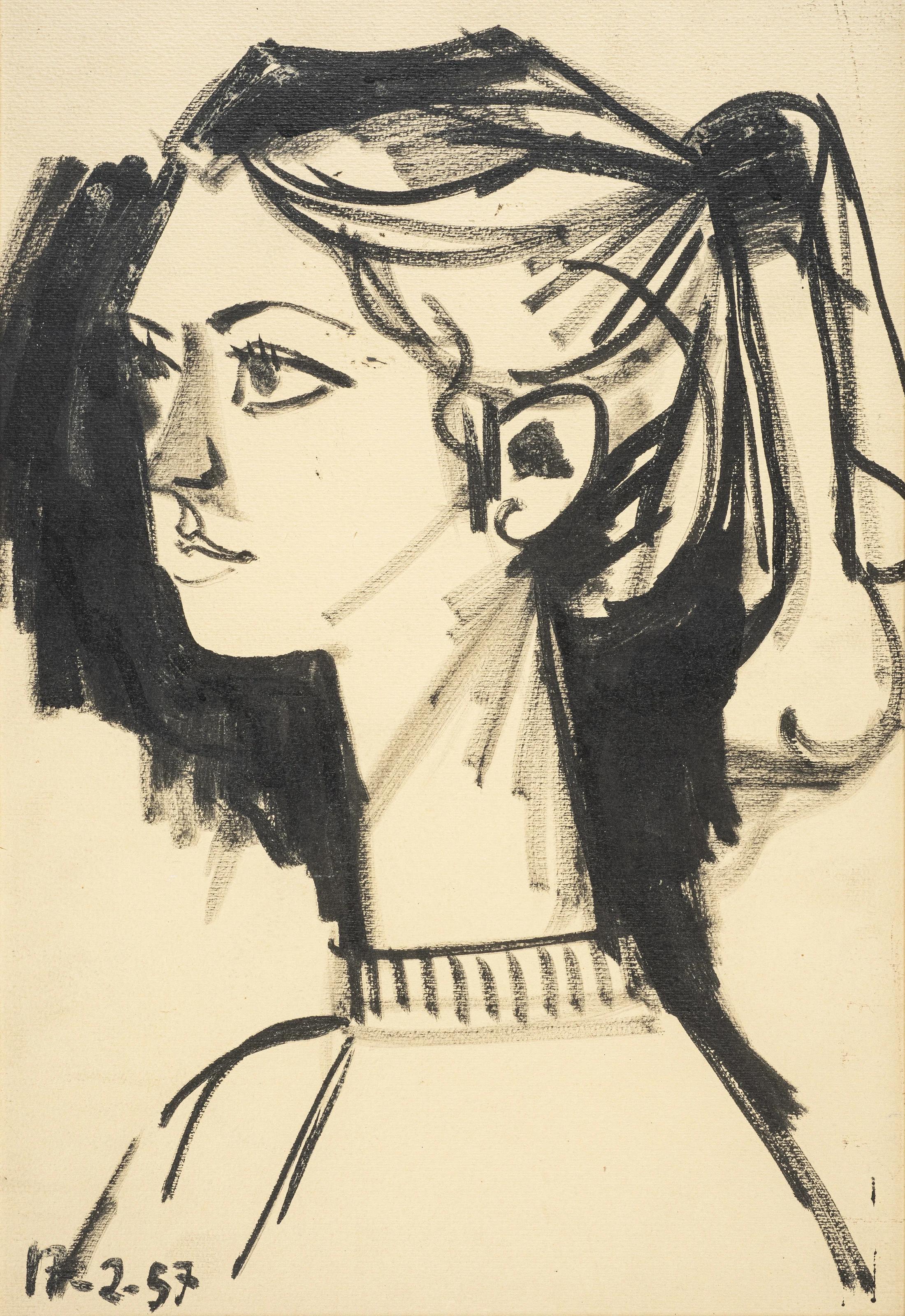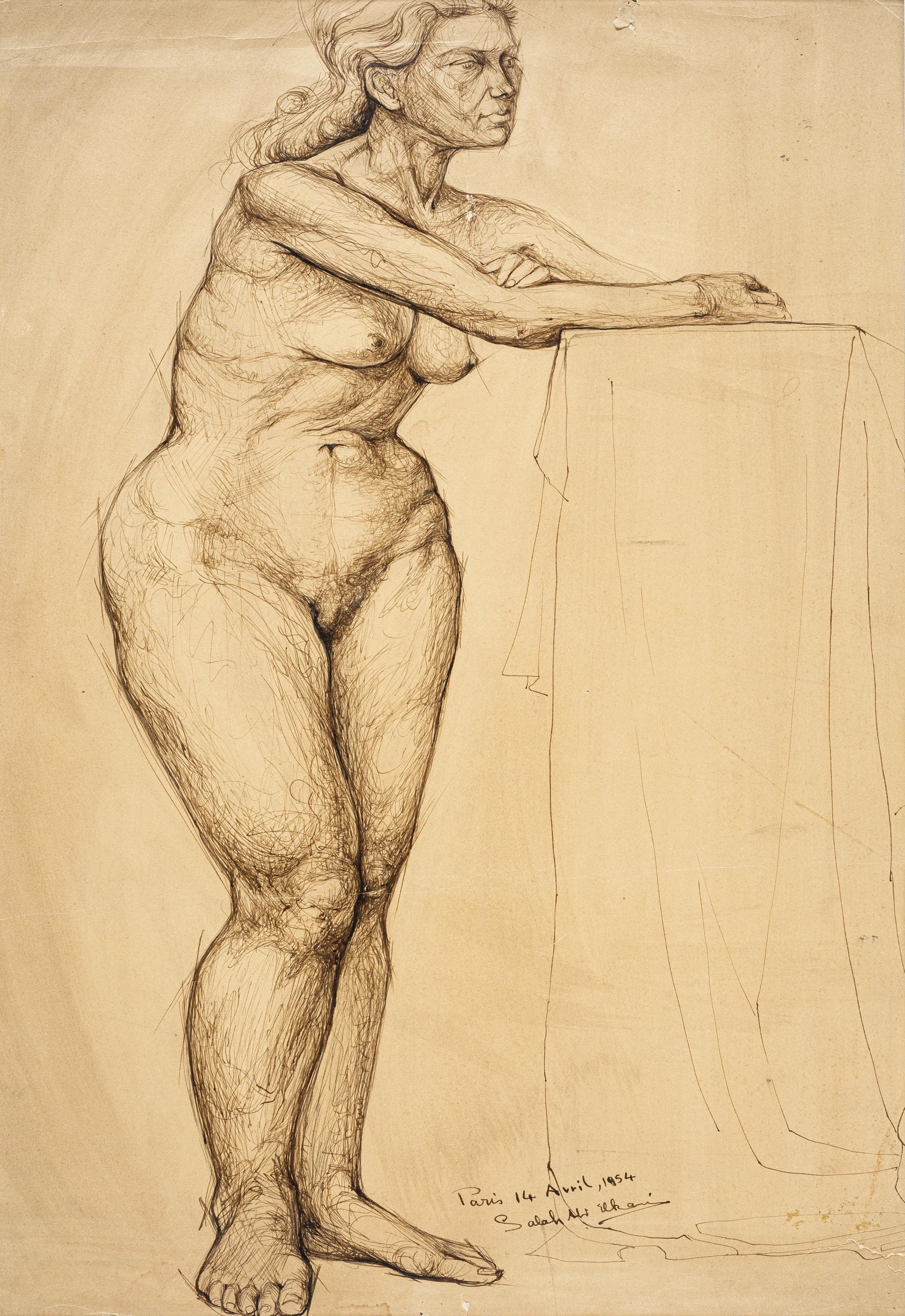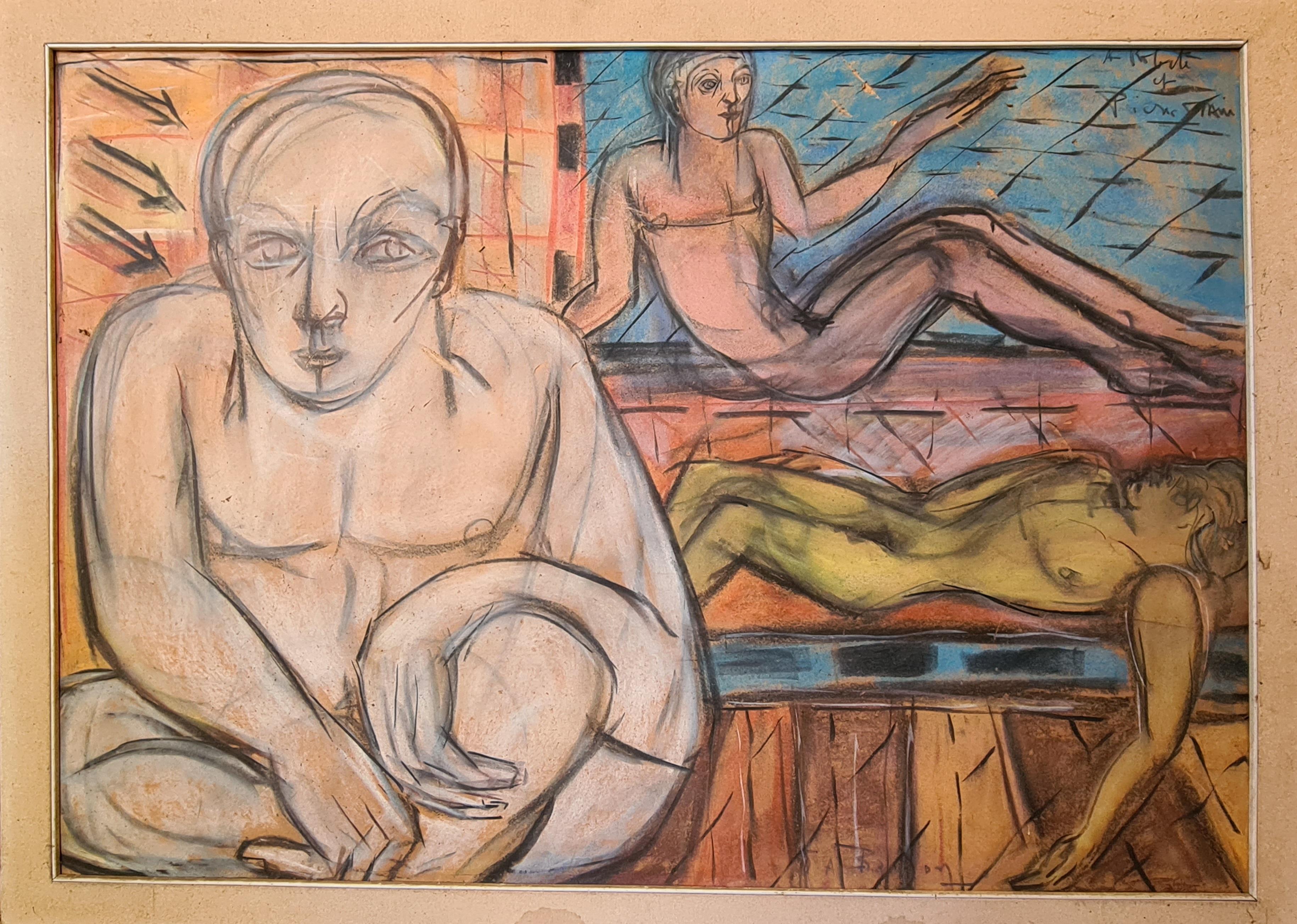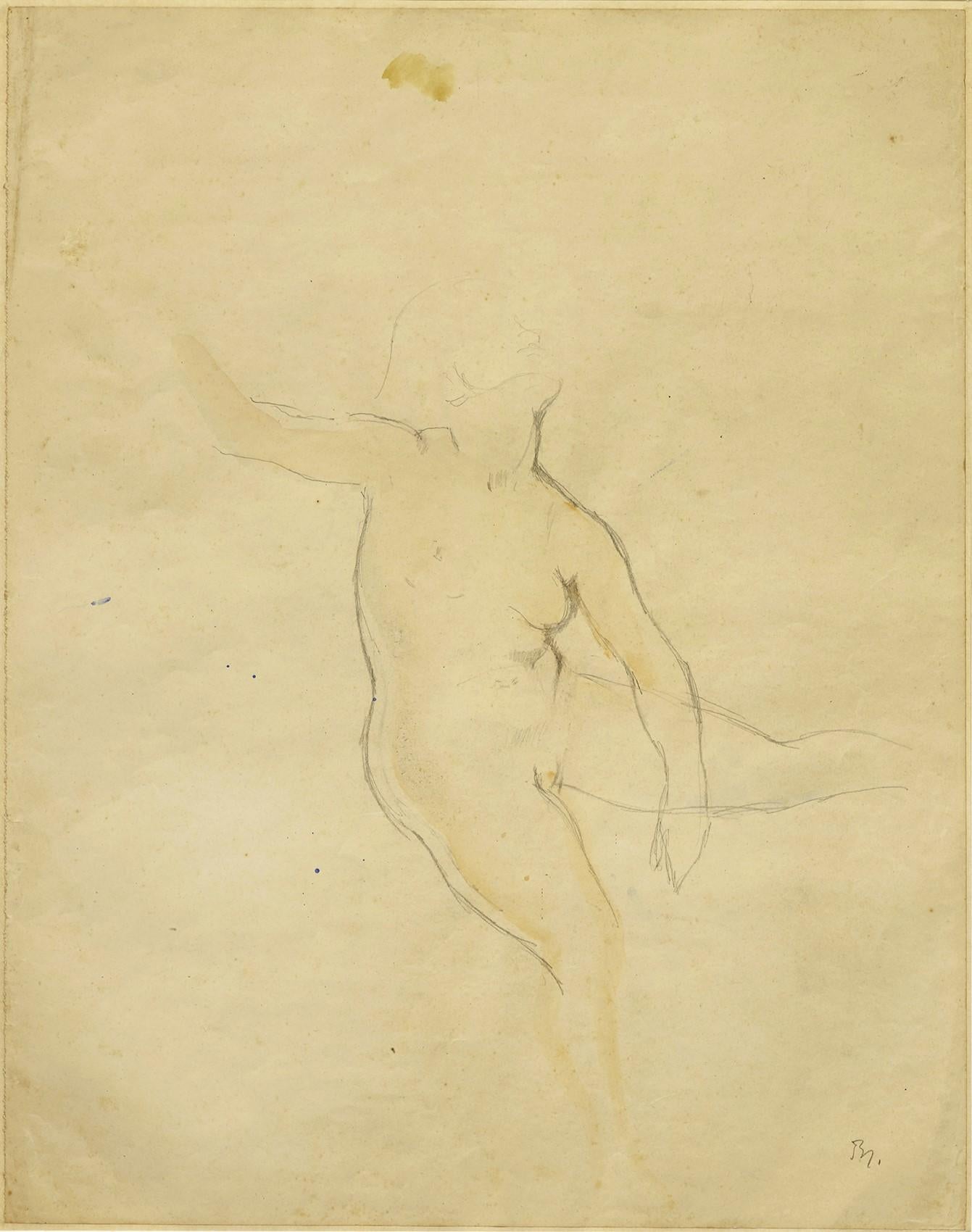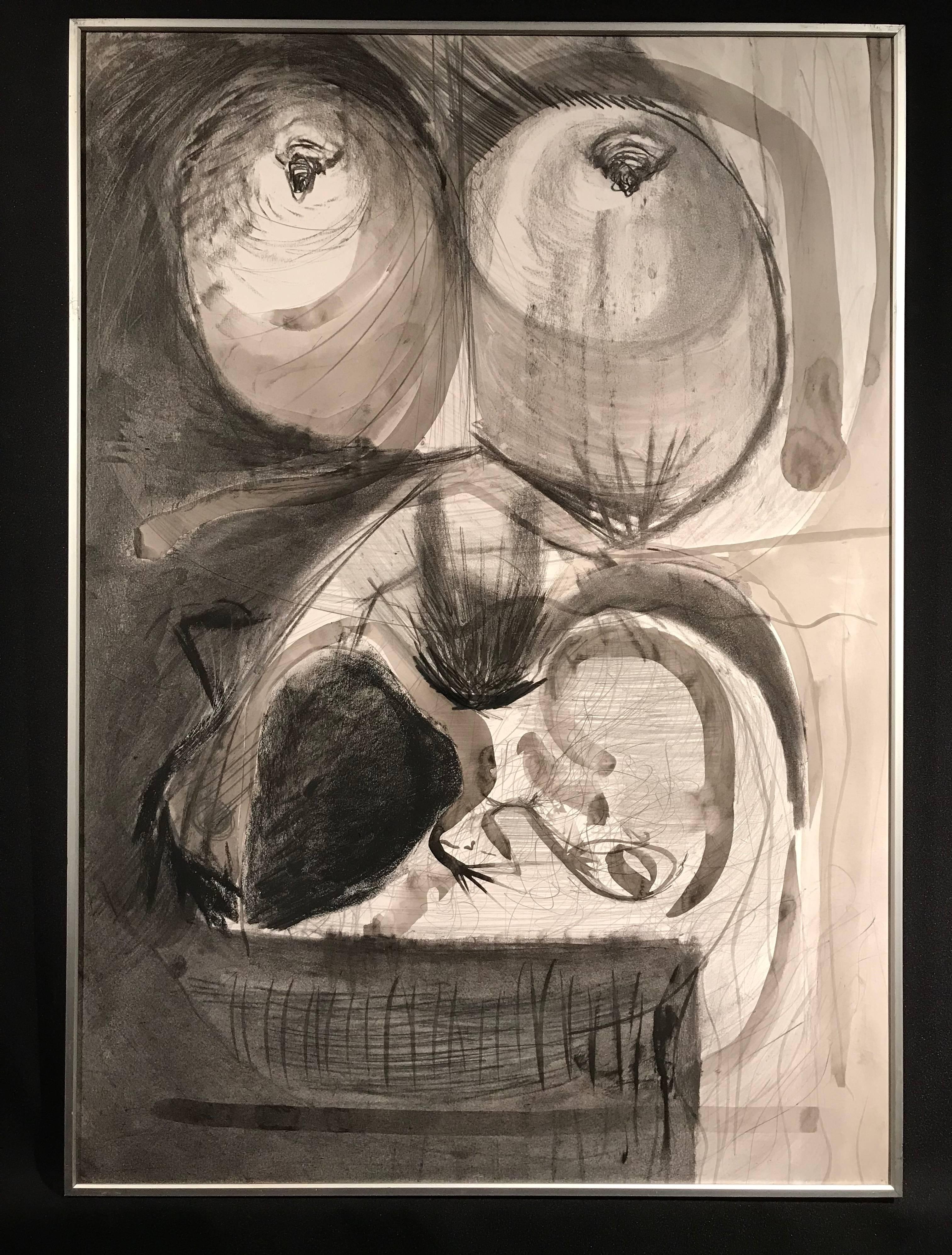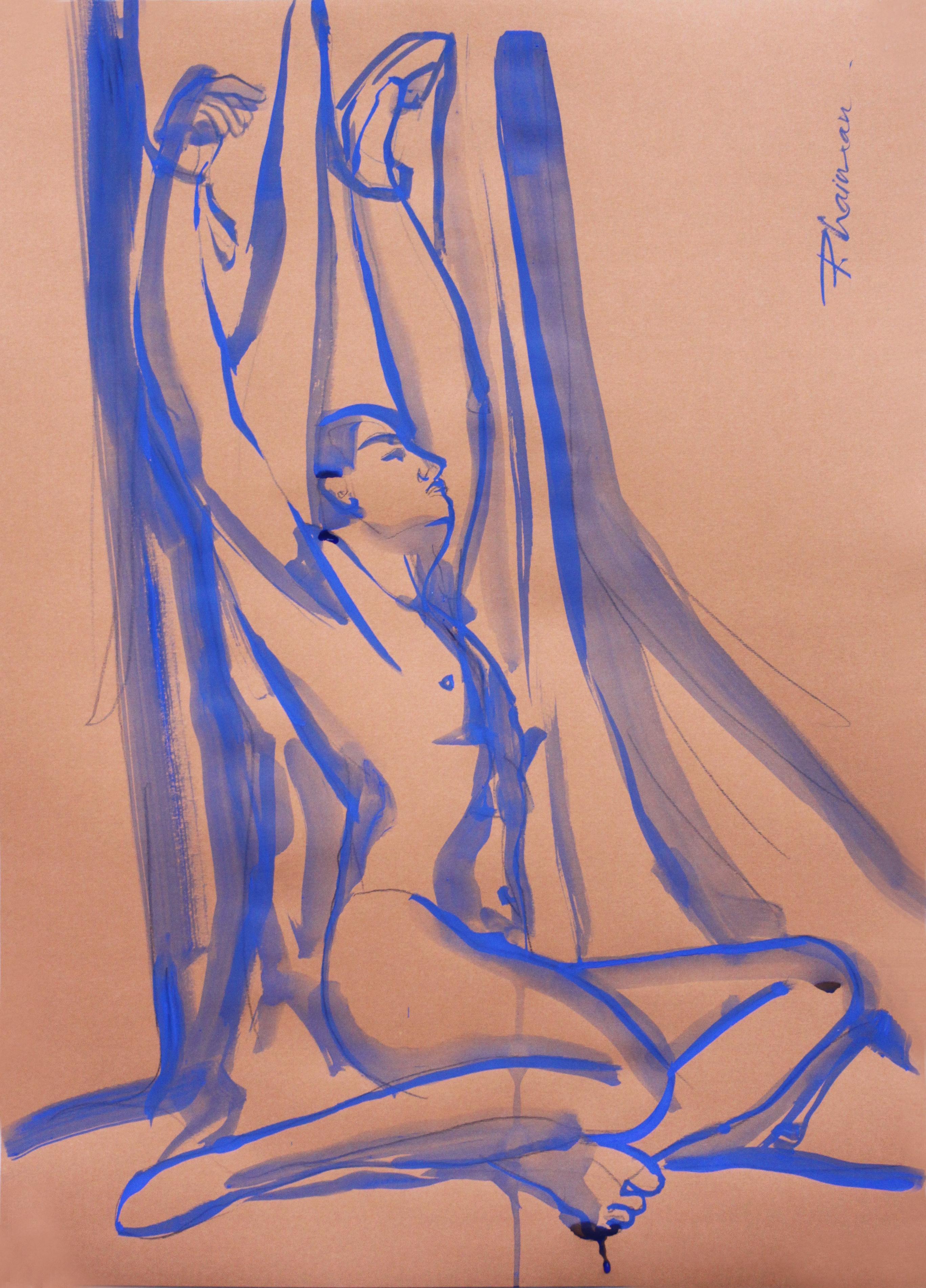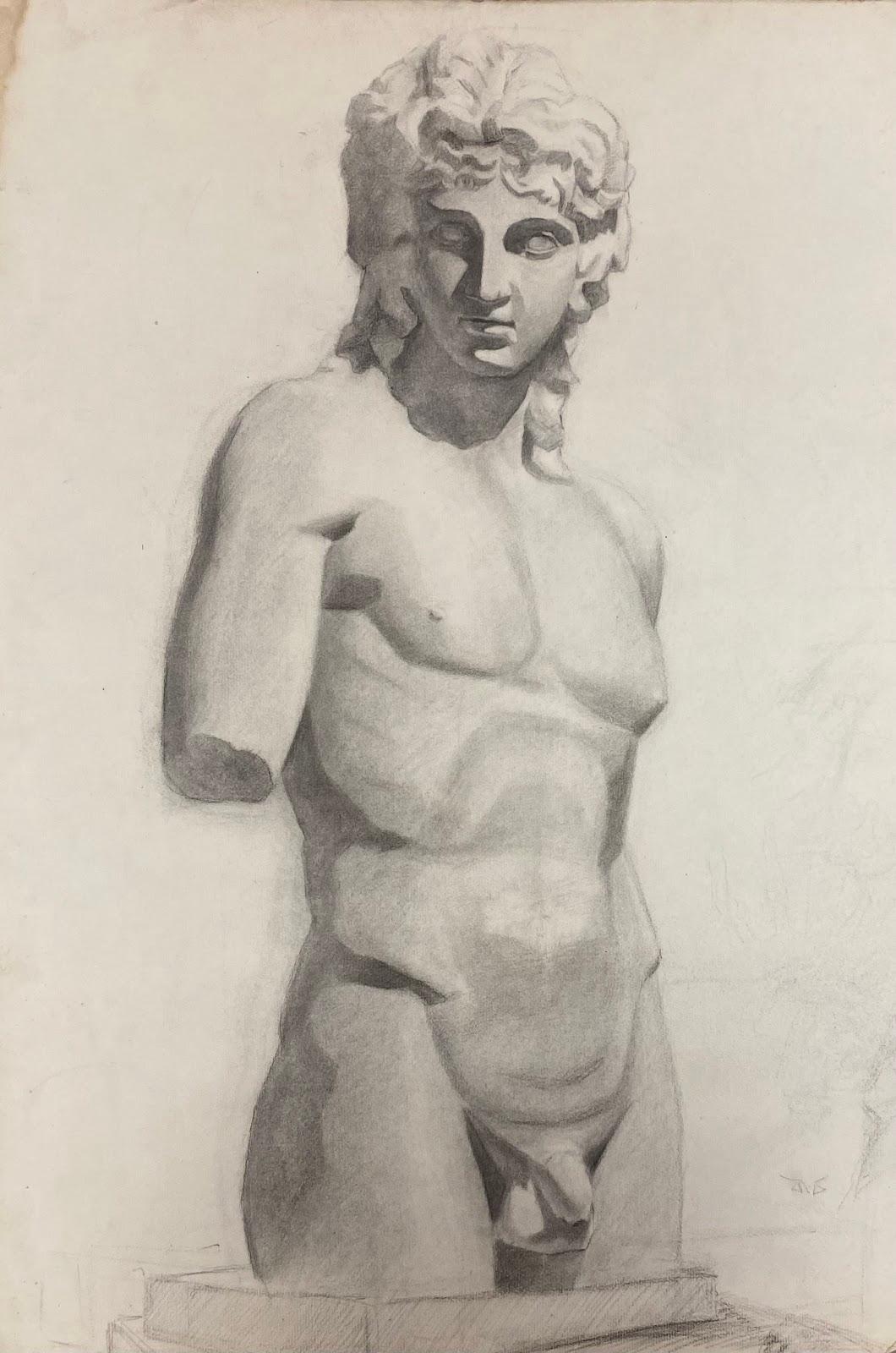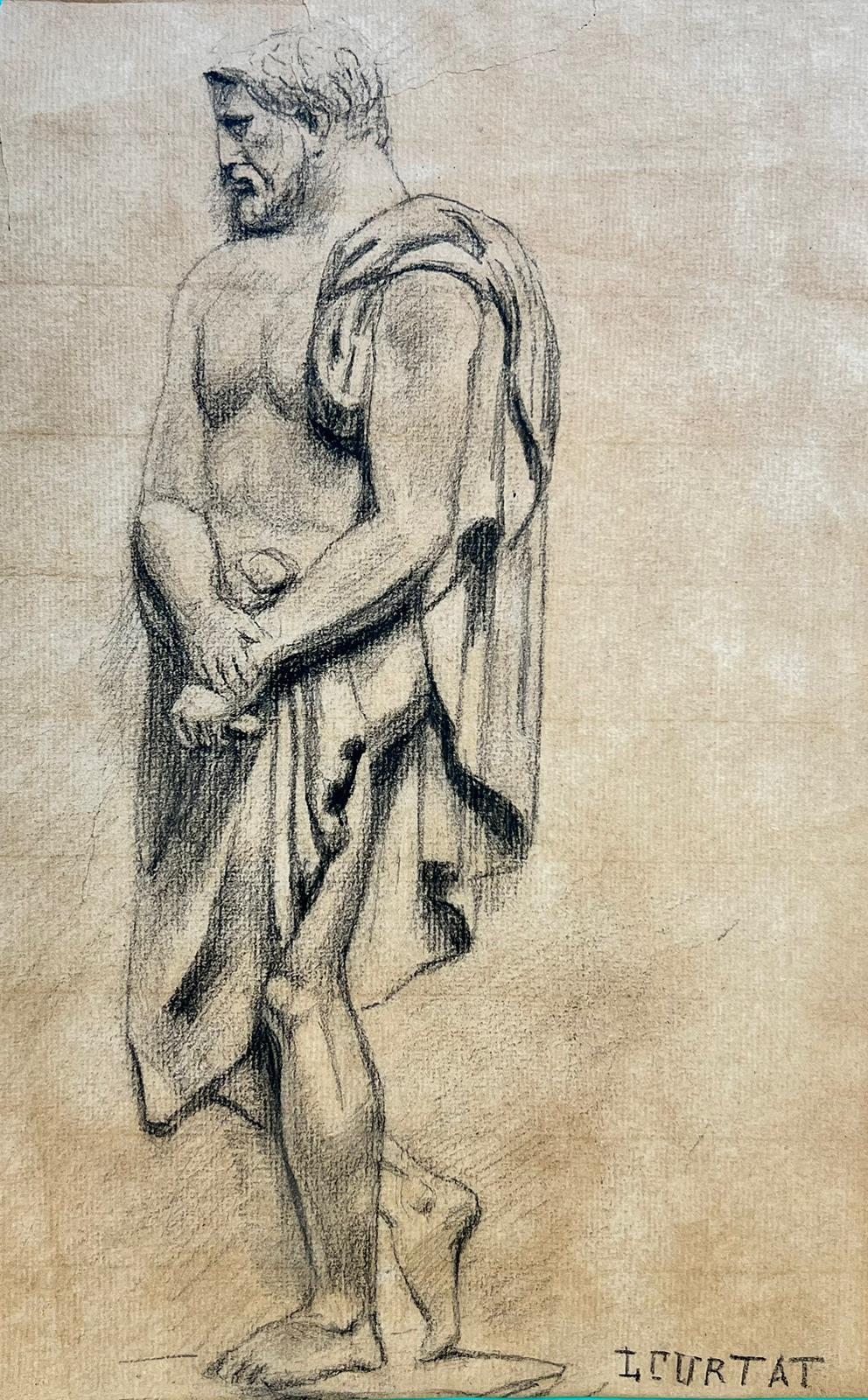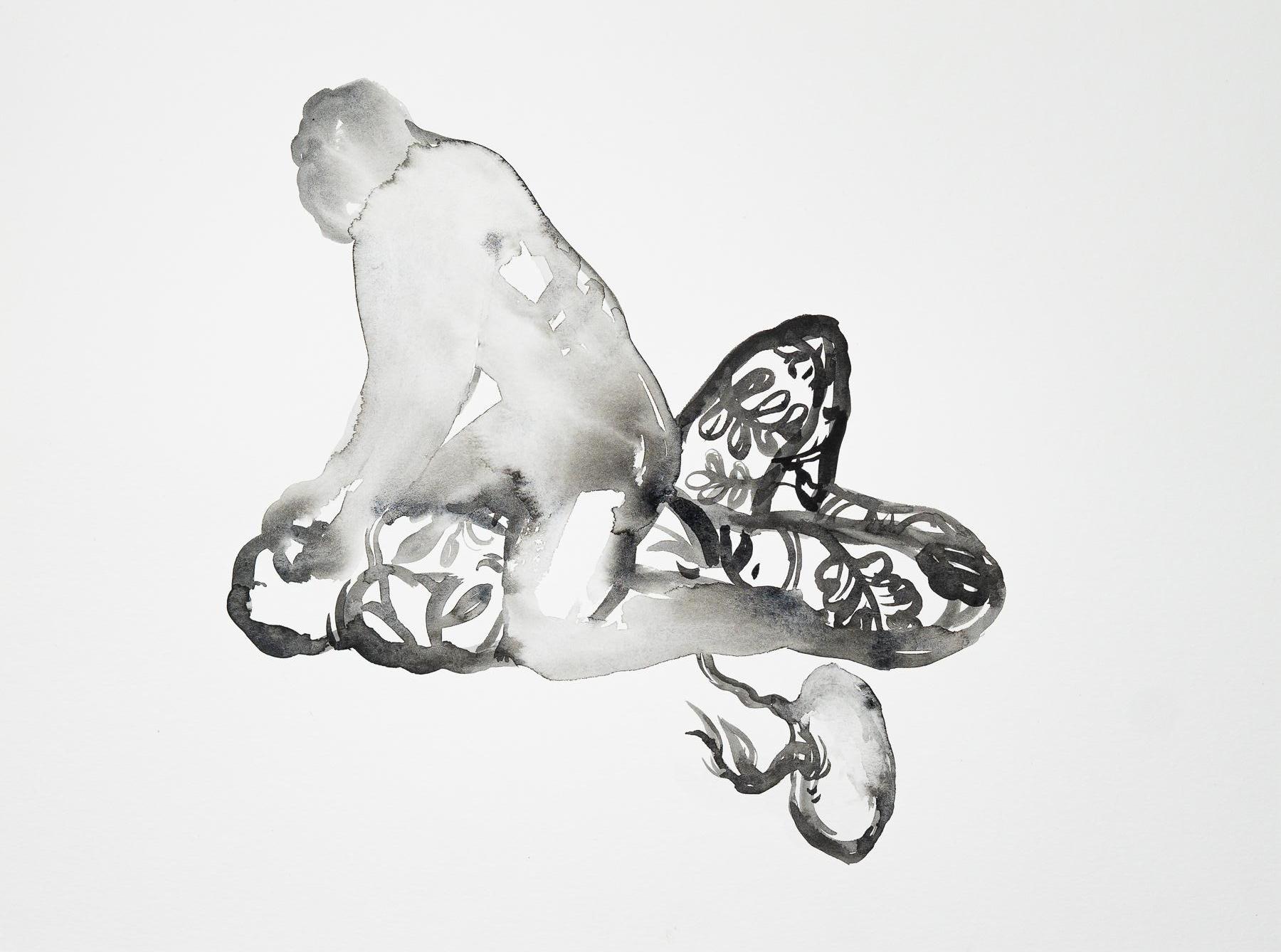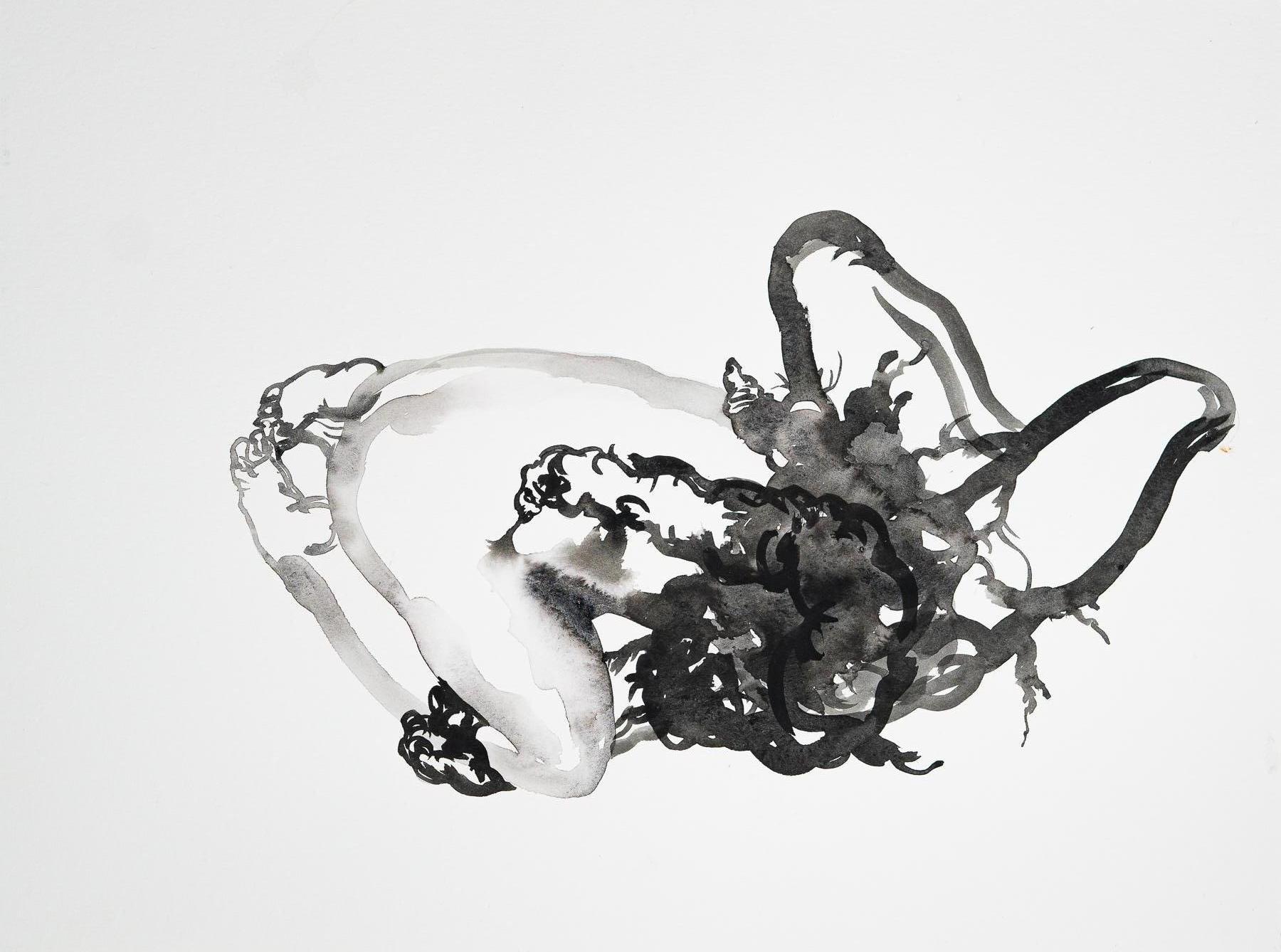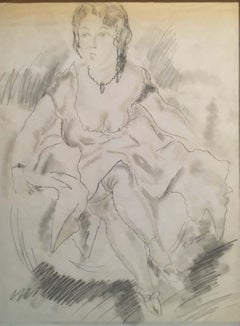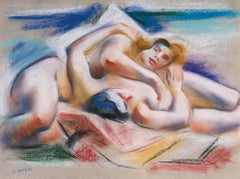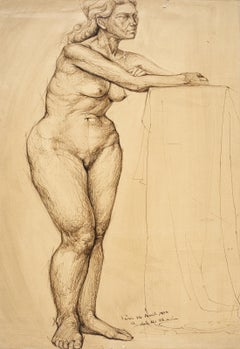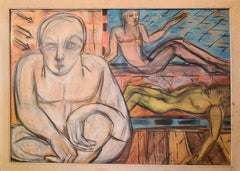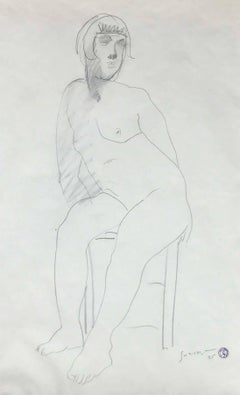
Seated Nude
View Similar Items
Léopold SurvageSeated Nude1925
1925
About the Item
- Creator:Léopold Survage (1879-1968)
- Creation Year:1925
- Dimensions:Height: 14.5 in (36.83 cm)Width: 9 in (22.86 cm)Depth: 3 in (7.62 cm)
- More Editions & Sizes:14 x 9 InchesPrice: $100
- Medium:
- Movement & Style:
- Period:
- Condition:
- Gallery Location:Los Angeles, CA
- Reference Number:1stDibs: LU391552783
Léopold Survage
At a young age, Léopold Survage was directed to enter the piano factory operated by his Finnish father. He learned to play piano and then completed a commercial diploma in 1897. After a severe illness at the age of 22, Survage rethought his career and entered the Moscow School of Painting, Sculpture and Architecture. Introduced to the modern movement through the collections of Sergei Shchukin and Ivan Morozov, he cast his lot with the Russian avant-garde and, by 1906, was loosely affiliated with the circle of the magazine Zolotoye runo. He met Alexander Archipenko, exhibiting with him in the company of David Burlyuk, Vladimir Burlyuk, Mikhail Larionov and Natalia Goncharova.
With Hélène Moniuschko, later his wife, he traveled to Western Europe, visiting Paris in July 1908. The couple eventually settled in Paris where Survage worked as a piano tuner and briefly attended the short-lived school run by Henri Matisse. He exhibited with the Jack of Diamonds group in Moscow in 1910 and first showed his work in France at the urging of Archipenko in the Salon d'Automne of 1911. In 1913, Survage produced abstract compositions using color and movement to evoke a type of musical sensation. Entitled Rythmes colorés, he planned to animate these illustrations using film to form "symphonies en couleur". He saw these abstract images as flowing together, but he exhibited the ink wash drawings separately at the Salon d'Automne in 1913 and Salon des Indépendants in 1914. Articles on these works were published by Guillaume Apollinaire (Paris-J., July 1914) and Survage himself (Soirées Paris, July–August 1914).
In June 1914, to develop his idea, Survage unsuccessfully applied for a patent to the Gaumont Film Company. Had he been able to raise the funds, he would have preceded Viking Eggeling and Hans Richter as the first to develop abstract films. Beginning in 1917, Survage shared a studio and a penchant for alcoholic excesses with Amedeo Modigliani in Paris. Survage later moved to Nice and, over the next eight years, produced highly structured oils and works on paper linked together by a series of leitmotifs, repeating groups of symbolic elements—man, sea, building, flower, window, curtain, bird as if they were protagonists in a series of moving images. The influence may have been Marc Chagall's, an artist well known for his insertions of floating couples, cows, roosters, and sundry Jewish iconography. By 1922, Survage had begun to move away from Cubism in favor of the neo-classical form. He was perhaps influenced by commissions for Serge Diaghilev's Ballets Russes, beginning with sets and costumes for Igor Stravinsky's opera buffa Mavra at the Paris Opéra in 1922. Although mainly a painter, he also produced stage, tapestry, and textile designs during this period (notably for the house of Chanel in 1933). Toward the end of the 1930s, as a result of his contact with André Masson, Survage became increasingly charmed by symbols and mysticism. The curvilinear forms that had previously dominated his compositions came, once again, under the control of the geometric structure. Survage was inducted into France's Légion d'Honneur in 1963. He died on 31 October 1968 in Paris.
- Nude StudyBy Georges ArtemoffLocated in Los Angeles, CAOriginal charcoal drawing by Russian-French artist, from the Art Deco period. 22 x 10 Inches without the frame. George Artemoff 1892 - 1965 George Artemoff was born in the Don Va...Category
1920s Art Deco Figurative Paintings
MaterialsArchival Paper, Charcoal
- Seated Semi-NudeBy Emil GansoLocated in Los Angeles, CAEMIL GANSO "SEATED NUDE" CHARCOAL WITH COLOR WASH, SIGNED AMERICAN, C.1930 21.5 X 15.5 INCHES Biography from Butler Institute of American Art Emil Ganso 1885-1941 Ganso was born in Germany in 1895. At age 14, he apprenticed to a baker and then worked his way to America when he was 17. He worked in bakeries in Scranton, Pennsylvania; and Cincinnati and Akron, Ohio. By 1916, Ganso was out of a job, and living the life of a bohemian in New York City, sometimes on less than 30 cents a week. In 1921, Ganso painted on a realistic nude on a bedsheet and was forced by the police to remove it from an exhibition. The bedsheet with the painting was later stolen. He soon had a job baking again at $140 a month, and with time to spare for painting and study. Ganso quit baking in 1925 when a New York dealer game him financial backing of $50 a week. Ganso has prospered from his art ever since. His work is in over 15 American museums, and the Print Club of Cleveland awarded him a $500 purchase prize for a wood engraving. A versatile artist, he paints a variety of subjects. Source: from a profile written by Clyde Singer...Category
1930s Art Deco Nude Drawings and Watercolors
MaterialsCharcoal
$1,075 Sale Price50% Off - La PlageBy André LhoteLocated in Los Angeles, CAANDRE LHOTE "LA PLAGE" PASTEL, SIGNED FRANCE, C.1927 17.75 X 24 INCHES André Lhote 1885-1962 Lhote was born in Bordeaux, France in 1885. H...Category
1930s Cubist Figurative Paintings
MaterialsArchival Paper, Pastel
Price Upon Request - Les Baigneuses de collioureLocated in Los Angeles, CAPascal Jarrion was born in Perpignan, France, in 1961. It is a region known for its Catalan culture and an area that has influenced many artists before ...Category
21st Century and Contemporary Cubist Figurative Paintings
MaterialsMixed Media
- HombreBy Roberto LisanoLocated in Los Angeles, CAROBERTO LISANO "HOMBRE" WOOD, SIGNED COSTA RICA, DATED 1995 13 X 11.5 INCHES Roberto Lisano Born 1951 Lizano in the work of the significance of the matter is ess...Category
21st Century and Contemporary Cubist Figurative Sculptures
MaterialsWood
- Lounging NudeBy Reza AfrookhtehLocated in Los Angeles, CAReza begun studying art seriously at age 15 and was studying at the institute of art in Iran where he graduated with highest honors. He also studied privately with one of Persia’s m...Category
2010s Cubist Figurative Paintings
MaterialsOil, Canvas
Price Upon Request
- "Portrait of Italian Woman" Pencil on Paper 20" x 12" inch by Salah Abdel KerimBy Salah Abdel KerimLocated in Culver City, CA"Portrait of Italian Woman" Pencil on Paper 20" x 12" inch by Salah Abdel Kerim Born in Fayoum to a big family of 5 brothers and sisters. In 1938 he meets the famous painter Hussein Bikar and he becomes his student in the Faculty of Arts in Qena. He remained much attached to his professor all through his life. In 1940 he meets Hussein Youssef Amin and the Group of Contemporary Art at the secondary school of Farouk First in Abasya district in Cairo when he was introduced to surrealism for the first time. In 1943 he becomes a student at the Faculty of Fine Arts and graduates with excellence and honors in 1947. In 1948 he becomes an assistant to the interior decoration section at the FFA. He is then sent to a mission in Paris in 1952 and he becomes a student to Paul Colin and A.Marie Cassandre for publicity and theatre design. He then moves to Rome in 1956 to study cinema design. In 1957 he received the international prize in painting from San Vito Romano, Italy, and obtains his Ph.D. from Centro Sperimental di Cinemato Grafia. Back in Egypt in 1958, he is appointed professor at the FFA where he started experimenting with his masterpieces sculptures in wrote iron...Category
20th Century Contemporary Nude Drawings and Watercolors
MaterialsPaper, Pencil
- "Nude Lady" Pencil on Paper 20" x 12" inch (1954) by Salah Abdel KerimBy Salah Abdel KerimLocated in Culver City, CA"Nude Lady" Pencil on Paper 20" x 12" inch (1954) by Salah Abdel Kerim Born in Fayoum to a big family of 5 brothers and sisters. In 1938 he meets the famous painter Hussein Bikar and he becomes his student in the Faculty of Arts in Qena. He remained much attached to his professor all through his life. In 1940 he meets Hussein Youssef Amin and the Group of Contemporary Art at the secondary school of Farouk First in Abasya district in Cairo when he was introduced to surrealism for the first time. In 1943 he becomes a student at the Faculty of Fine Arts and graduates with excellence and honors in 1947. In 1948 he becomes an assistant to the interior decoration section at the FFA. He is then sent to a mission in Paris in 1952 and he becomes a student to Paul Colin and A.Marie Cassandre for publicity and theatre design. He then moves to Rome in 1956 to study cinema design. In 1957 he received the international prize in painting from San Vito Romano, Italy, and obtains his Ph.D. from Centro Sperimental di Cinemato Grafia. Back in Egypt in 1958, he is appointed professor at the FFA where he started experimenting with his masterpieces sculptures in wrote iron...Category
20th Century Contemporary Nude Drawings and Watercolors
MaterialsPaper, Pencil
- Futurist, Novecento Italiano, Mid Century Italian Painting, Figures at the BathsBy Anselmo BucciLocated in Cotignac, FRMid 20th Century Italian Futurist, Novecento Italiano, work on paper, signed bottom right and with dedication top right (see photos). The subject is bathers enjoying the delights of a spa and sauna with colourful tiling to the background. The classical figures languorously positioned in repose but the central 'white' figure in stark contrast. The play on colours gives the work a vibrancy. The drawing is possibly a preparatory sketch for a larger work or mural. A vibrant, exciting and colourful work incorporating the styles of Futurism and the Novecento Italiano movement and with the influences or artists such as Anselmo Bucci, Adami, Jean Helion, Maryan, Achille Funi and Ugo Guidi. Anselmo Bucci was born in 1887 in Fossombrone in the district of Pesaro. Even though he studied Classics, right from a tender age he showed a talent for drawing and, when his parents moved near to Florence, he was taught by the artist Francesco Salvini. In 1904 the family settled in Monza and so the boy was able to study for a year at the Accademia di Belle Arti di Brera, but he did not follow up this educational experience and in 1906 he left Italy for Paris where he came into contact with the Parisian avant-garde, met fellow Italian artists such as Severini and Modigliani, and made friends with Picasso, Utrillo and Apollinaire. In 1907 he showed a painting at the Salon, but these Parisian years were most important for his love of engraving techniques – etching and dry point that enabled him to fully develop his themes characterised by movement. On the outbreak of war in 1915 he returned to Italy and he enlisted in the same battalion as several Futurist artists such as Martinetti, Boccioni, Sant’Elia and Carlo Erba. In 1914 he won the silver medal at the Mostra dell’Incisione (Exhibition of Engravings) at Florence. In 1917 in Paris he published pictures of war scenes entitled “Croquis du Front Italien”. In 1919 he printed twelve lithographs entitled “Finis Austriae” again showing events from the war. At the end of the war he lived between Milan and Paris and he dedicated his time completely to his art with personal exhibitions, exhibiting at all the most important Italian and French shows, in Belgium, Holland and England. In 1922, he established the group “Movimento del Novecento”, (Novecento Italiano), (20th century Movement) a joint venture with the artists Sironi, Funi, Oppi, Malerba, Dudreville and Marussig. Their aim was to return to figurative art in contrast with the growing extremism of the Avant-gardists. In 1925 he worked on the illustration of the first edition of Kipling’s The Jungle Book producing eight dry point plates. In the early 30’s he lived in Bucci, Trieste, where he worked on the furnishing of the steamships for the Trieste Navigazione Libera, at the same time he continued to work on many book illustrations. During the second European war he adapted to being a war artist recording the events of the war as he had done previously. Indeed the engravings depicting battles of the Marines and the Air Force belong to this period. In 1945, following the bombing of his house in Milan, he returned to Monza to his father’s home where he remained until his death. Futurism was an Italian art movement of the early twentieth century that aimed to capture in art the dynamism and energy of the modern world. Futurism was launched by the Italian poet Filippo Tommaso Marinetti in 1909. On 20 February he published his Manifesto of Futurism on the front page of the Paris newspaper Le Figaro. Among modernist movements futurism was exceptionally vehement in its denunciation of the past. This was because in Italy the weight of past culture was felt as particularly oppressive. In the Manifesto, Marinetti asserted that ‘we will free Italy from her innumerable museums which cover her like countless cemeteries’. What the futurists proposed instead was an art that celebrated the modern world of industry and technology: We declare…a new beauty, the beauty of speed. A racing motor car…is more beautiful than the Victory of Samothrace. (A celebrated ancient Greek sculpture in the Louvre museum in Paris.) Futurist painting used elements of neo-impressionism and cubism to create compositions that expressed the idea of the dynamism, the energy and movement, of modern life. Chief artists associated with futurism were Giacomo Balla, Umberto Boccioni, Gino Severini. After the brutality of the first world war, many artists rejected the avant-garde notions of futurism and other pre-war movements, by using more traditional and reassuring approaches, a phenomenon described as the ‘return to order’. Novecento Italiano was founded by Anselmo Bucci (1887–1955), Leonardo Dudreville (1885–1975), Achille Funi, Gian Emilio Malerba (1880–1926), Pietro Marussig, Ubaldo Oppi, and Mario Sironi. Motivated by a post-war "call to order", they were brought together by Lino Pesaro, a gallery owner interested in modern art, and Margherita Sarfatti, a writer and art critic who worked on Italian dictator Benito Mussolini's newspaper, The People of Italy (Il Popolo d'Italia). Sarfatti was also Mussolini's mistress. The movement was officially launched in 1923 at an exhibition in Milan, with Mussolini as one of the speakers. The group was represented at the Venice Biennale of 1924 in a gallery of its own, with the exception of Oppi, who exhibited in a separate gallery. Oppi's defection caused him to be ejected from the group, which subsequently split and was reformed. The new Novecento Italiano staged its first group exhibition in Milan in 1926. Several of the artists were war veterans; Sarfatti had lost a son in the war. The group wished to take on the Italian establishment and create an art associated with the rhetoric of fascism. The artists supported the fascist regime and their work became associated with the state propaganda department, although Mussolini reprimanded Sarfatti for using his name and the name of fascism to promote Novecento. The name of the movement (which means 1900s) was a deliberate reference to great periods of Italian art in the past, the Quattrocento and Cinquecento (1400s and 1500s). The group rejected European avant garde art and wished to revive the tradition of large format history painting in the classical manner. It lacked a precise artistic programme and included artists of different styles and temperament, for example, Carrà and Marini. It aimed to promote a renewed yet traditional Italian art. Sironi said, “if we look at the painters of the second half of the 19th century, we find that only the revolutionary were great and that the greatest were the most revolutionary”; the artists of Novecento Italiano “would not imitate the world created by God but would be inspired by it”. Despite official patronage, Novecento art did not always have an easy ride in Fascist Italy. Mussolini was personally uninterested in art and divided official support among various groups so as to keep artists on the side of the regime. Opening the exhibition of Novecento art in 1923 he declared that “it is far from my idea to encourage anything like a state art. Art belongs to the domain of the individual. The state has only one duty: not to undermine art, to provide humane conditions for artists, to encourage them from the artistic and national point of view." The movement was in competition with other pro-Fascist movements, especially Futurism and the regionalist Strapaese movement. Novecento Italiano also met outright opposition. Achille Starace, the General Secretary of the Fascist Party, attacked it in the Fascist daily press and there was virulent criticism of its “un-Italian" qualities by artists and critics. In the 1930s, a group of professors and students at the Accademia di Brera established an opposition group to Novecento Italiano. Among them was the director of the academy Aldo Carpi, and students Afro, Aldo Badoli, Aldo Bergolli, Renato Birolli, Bruno Cassinari, Cherchi, Alfredo Chighine, Grosso, Renato Guttuso, Dino Lanaro, Giuseppe Migneco, Mantica, Ennio Morlotti, Aligi Sassu, Ernesto Treccani, Italo Valenti, and Emilio Vedova (and later Giuseppe Ajmone...Category
Mid-20th Century Futurist Figurative Paintings
MaterialsPaper, Pastel, Crayon, Pencil
- Study for "Getting up" – 1955, a preparatory drawing by Balthus (1908 -2001)By Balthus (Balthasar Klossowski de Rola)Located in PARIS, FRIn 1955, as he was residing at the Château de Chassy in the Morvan for two years, Balthus created a large painting entitled "Getting up". Balthus was inspired for this painting by t...Category
1950s Modern Nude Drawings and Watercolors
MaterialsWatercolor, Pencil
- Circle of Pablo Picasso Nude Abstract Figurative Monotone ColorsLocated in Cirencester, GloucestershireSuperb period work from the 1960's era - very close in every respect to the later works by Pablo Picasso. The artwork is not signed but we believe it to be of French authorship. Pr...Category
Mid-20th Century Abstract Expressionist Figurative Paintings
MaterialsPencil, Watercolor
$1,857 Sale Price34% Off - An August Resaissance / 2018 - framed nudeBy Kim FrohsinLocated in Burlingame, CABlue nude is swirling abstracted water figurative painting from Kim Frohsin's "Emergence" series from 2018. Frohsin, third generation Bay Area Figurative artist—from the movement tha...Category
21st Century and Contemporary Contemporary Figurative Paintings
MaterialsInk, Color Pencil, Gouache, Tempera, Acrylic, Mixed Media
